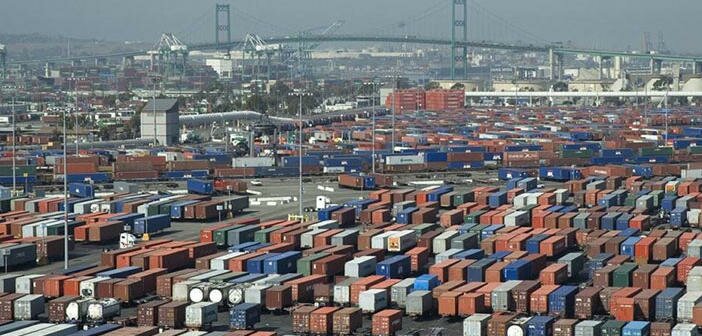The rate of import growth at the nation’s major retail container ports has begun to slow after double-digit surges earlier this year but volume should nonetheless hit an all-time high by the end of the summer, according to the monthly Global Port Tracker report released by the National Retail Federation and Hackett Associates.
“Year-over-year comparisons are slowing down but that’s largely because we had some unusual numbers early this year and strong volume in the second half of last year,” said Jonathan Gold, vp/supply chain and customs policy, NRF. “Despite that, we’re expecting some of the largest import volumes we’ve ever seen, and that’s because retailers are responding to strong consumer demand.”
Ports covered by Global Port Tracker handled 1.61 million twenty-foot equivalent units in April, the latest month for which after-the-fact numbers are available. That was up 4.8% from March and up 11.3% from April 2016. One TEU is one 20-foot-long cargo container or its equivalent.
May was estimated at 1.69 million TEU, up 3.9% from the same time last year. June is forecast at 1.64 million TEU, up 4.1% from last year; July at 1.68 million TEU, up 3.5%; August at 1.74 million TEU, up 1.6%; September at 1.64 million TEU, up 2.8%, and October at 1.69 million TEU, up 1.3%. The August figure would be the highest monthly volume recorded since NRF began tracking imports in 2000, topping the 1.73 million TEU seen in March 2015.
The first half of 2017 is expected to total 9.6 million TEU, up 6.4% from the first half of 2016. Cargo volume for 2016 totaled 18.8 million TEU, up 3.1% from 2015, which had grown 5.4% from 2014.
Hackett Associates founder Ben Hackett noted that the falling rate of growth in imports has been reflected in lower industrial output growth at factories in China, which increased 6.5% in April compared with 7.6% in March and is expected to drop further when May numbers are released.




